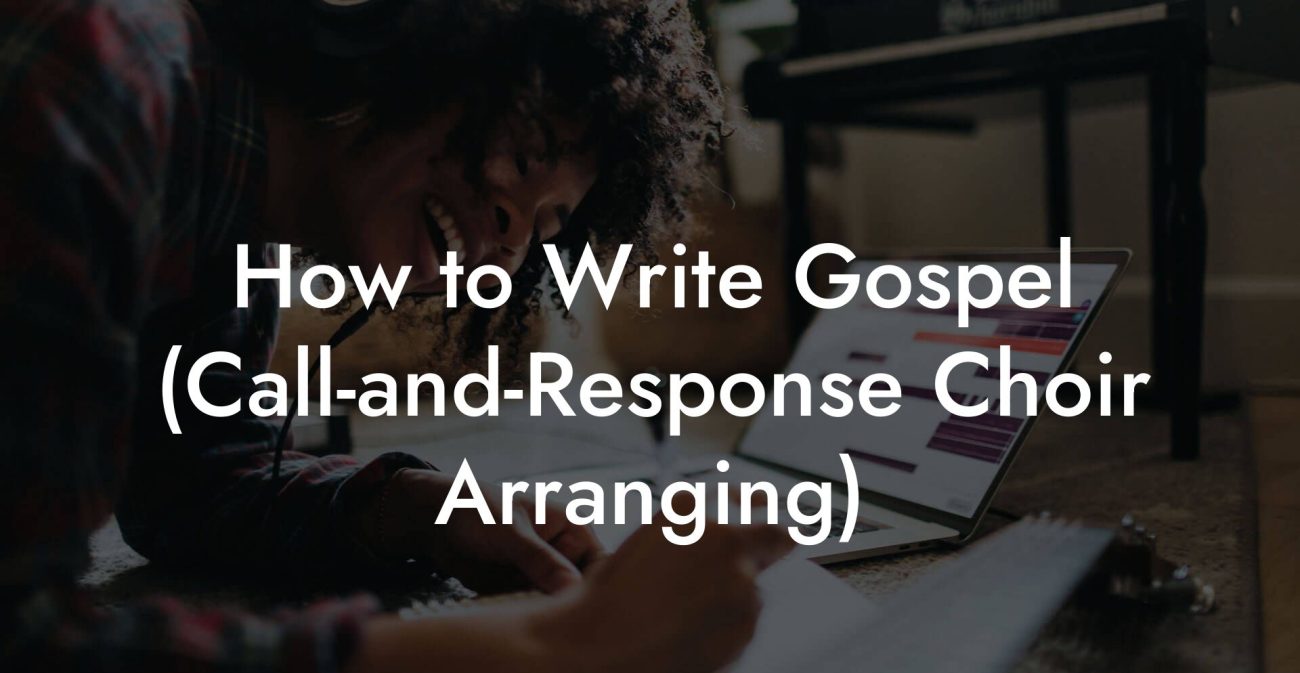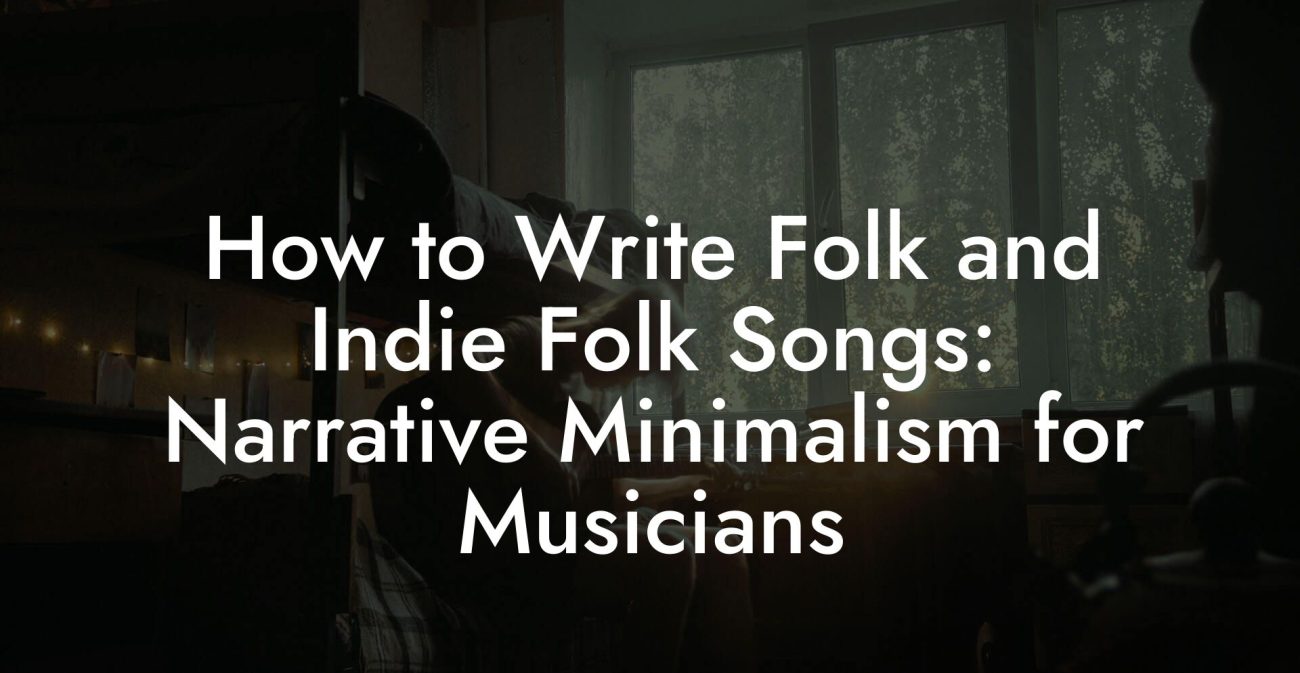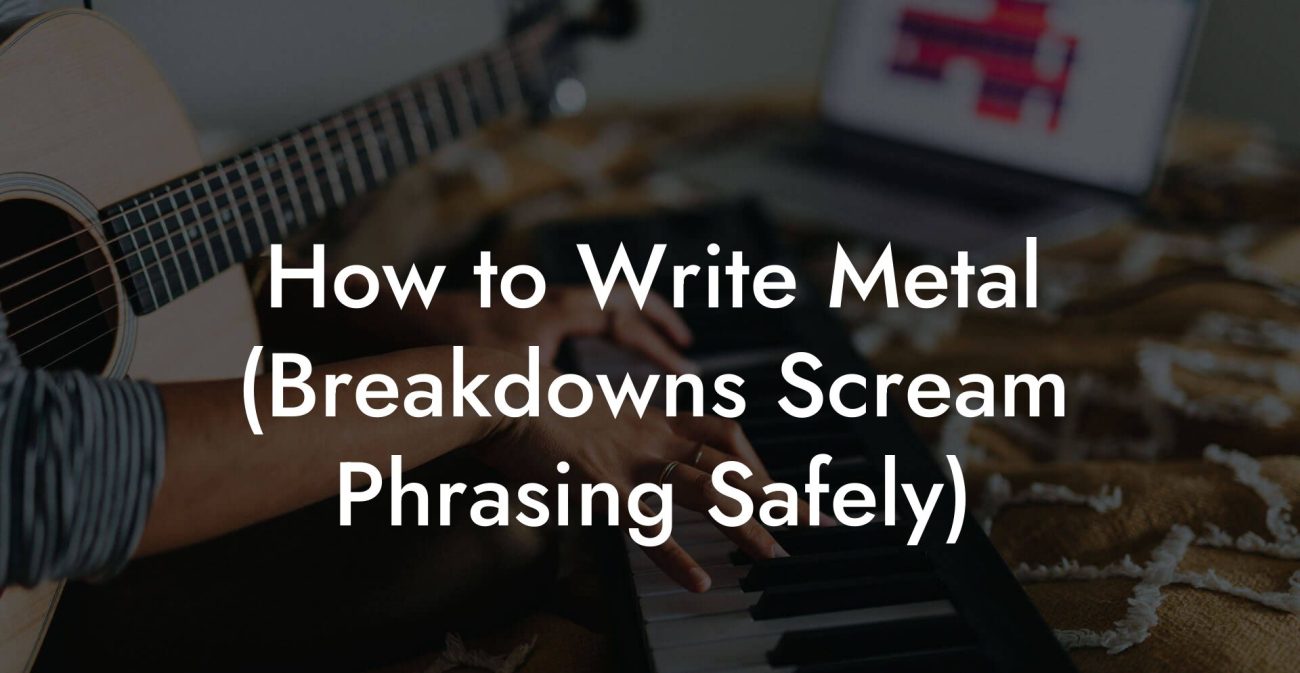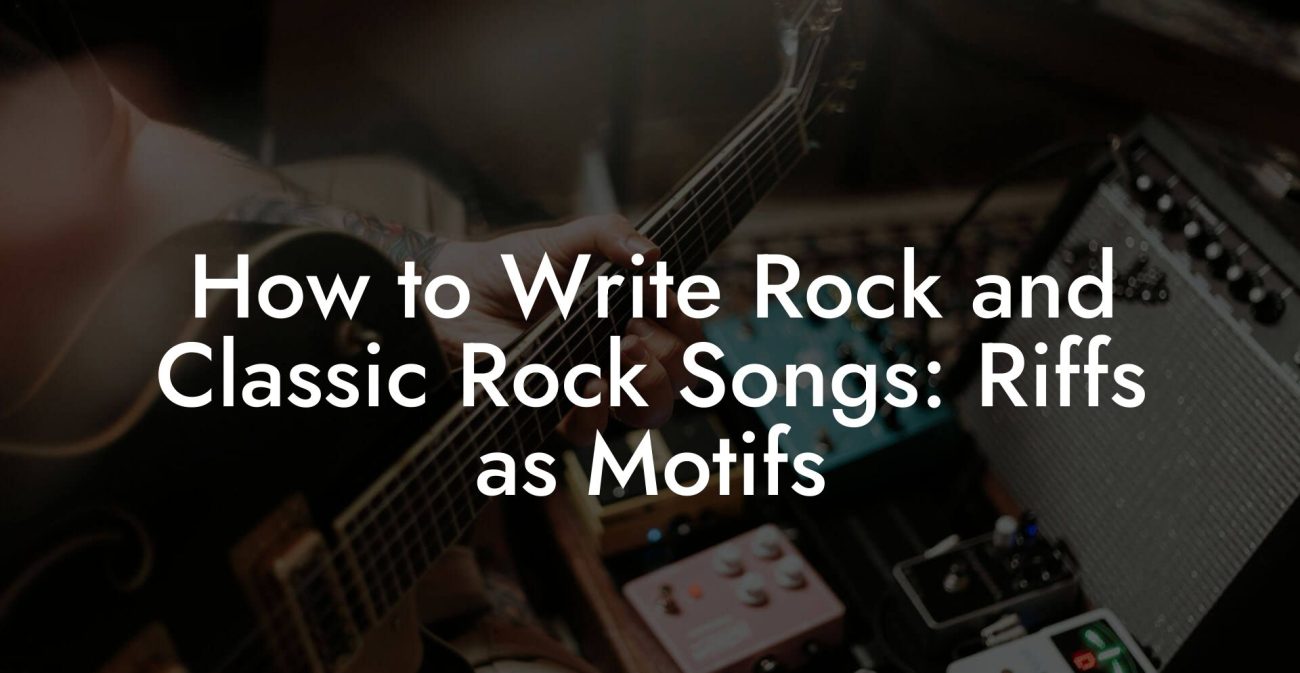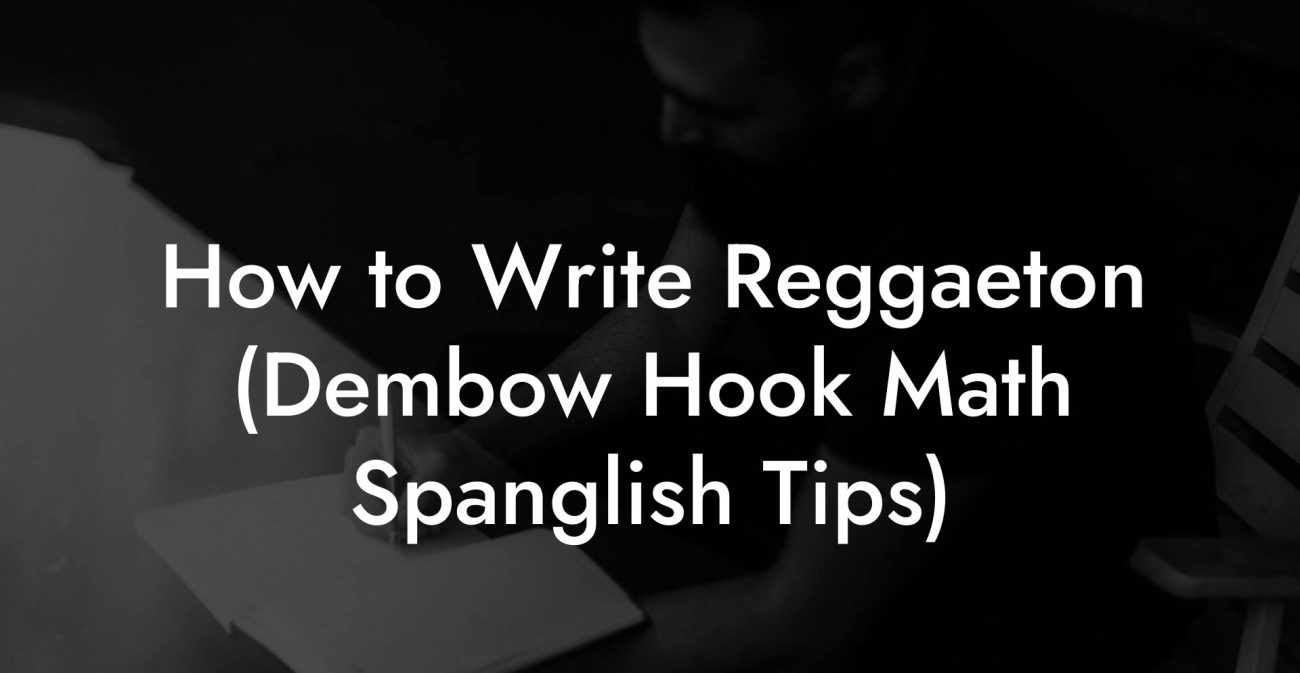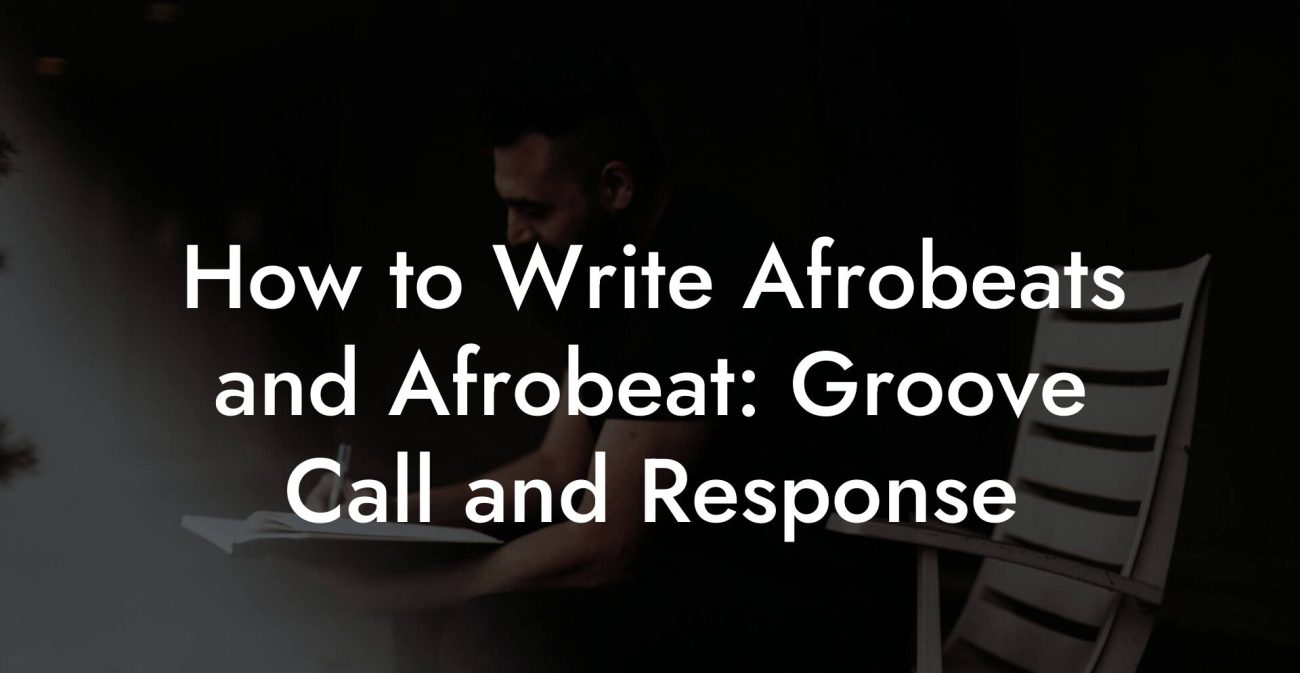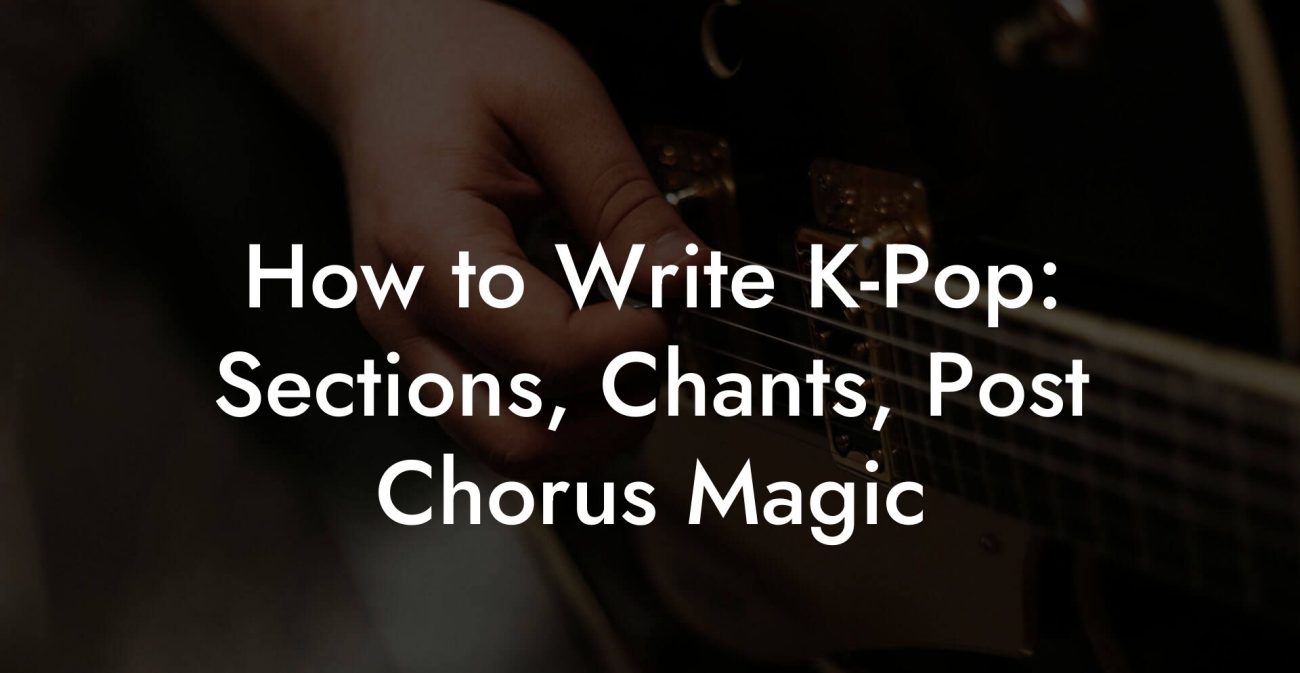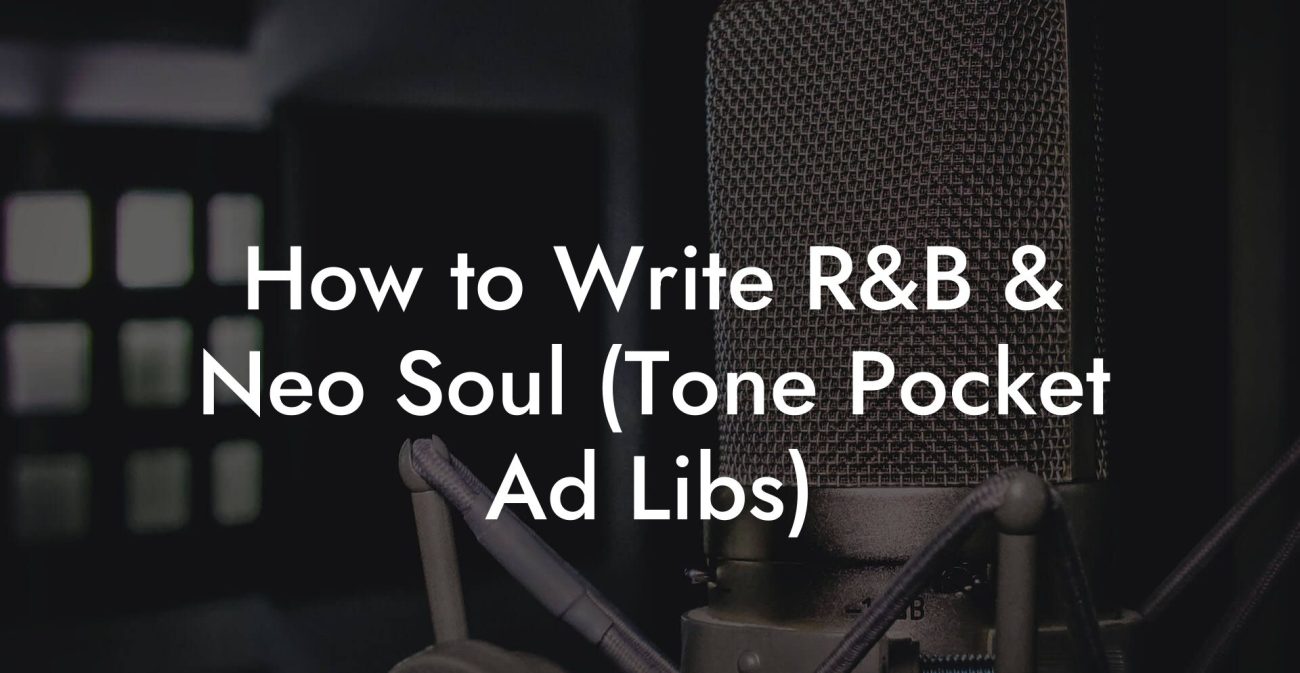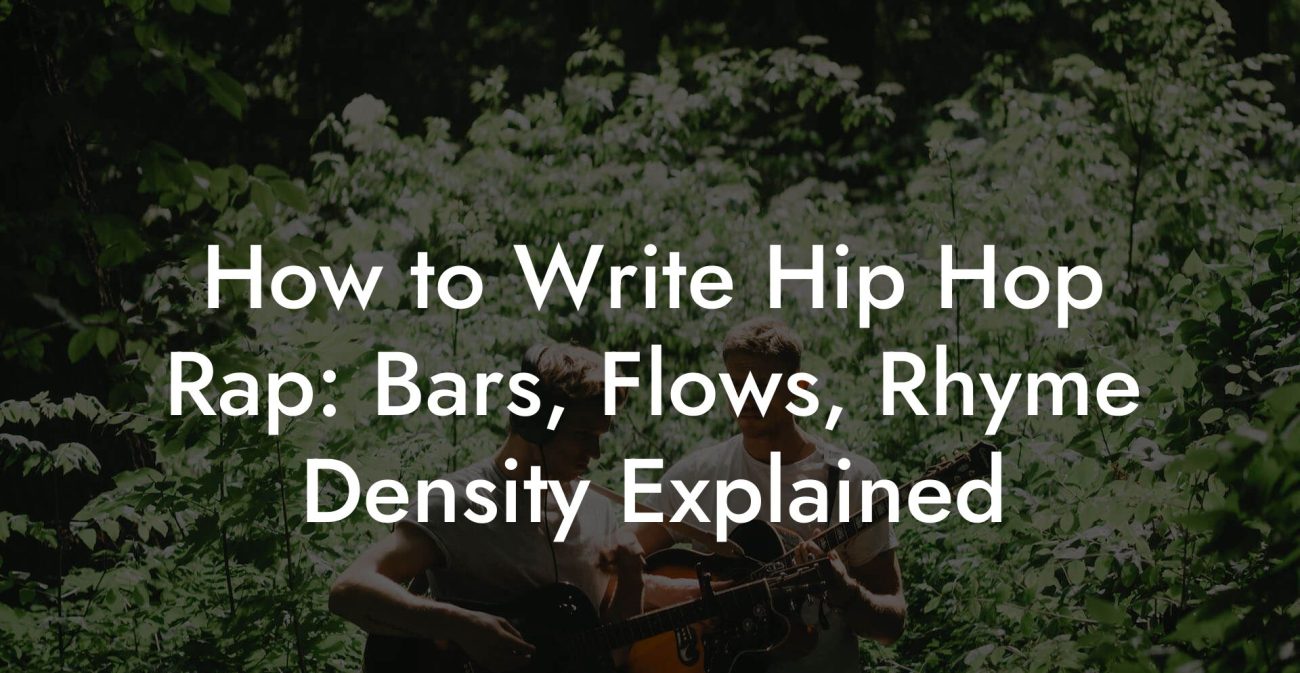Songwriting Advice
How to Write Country (Story Arcs Detail Turns)
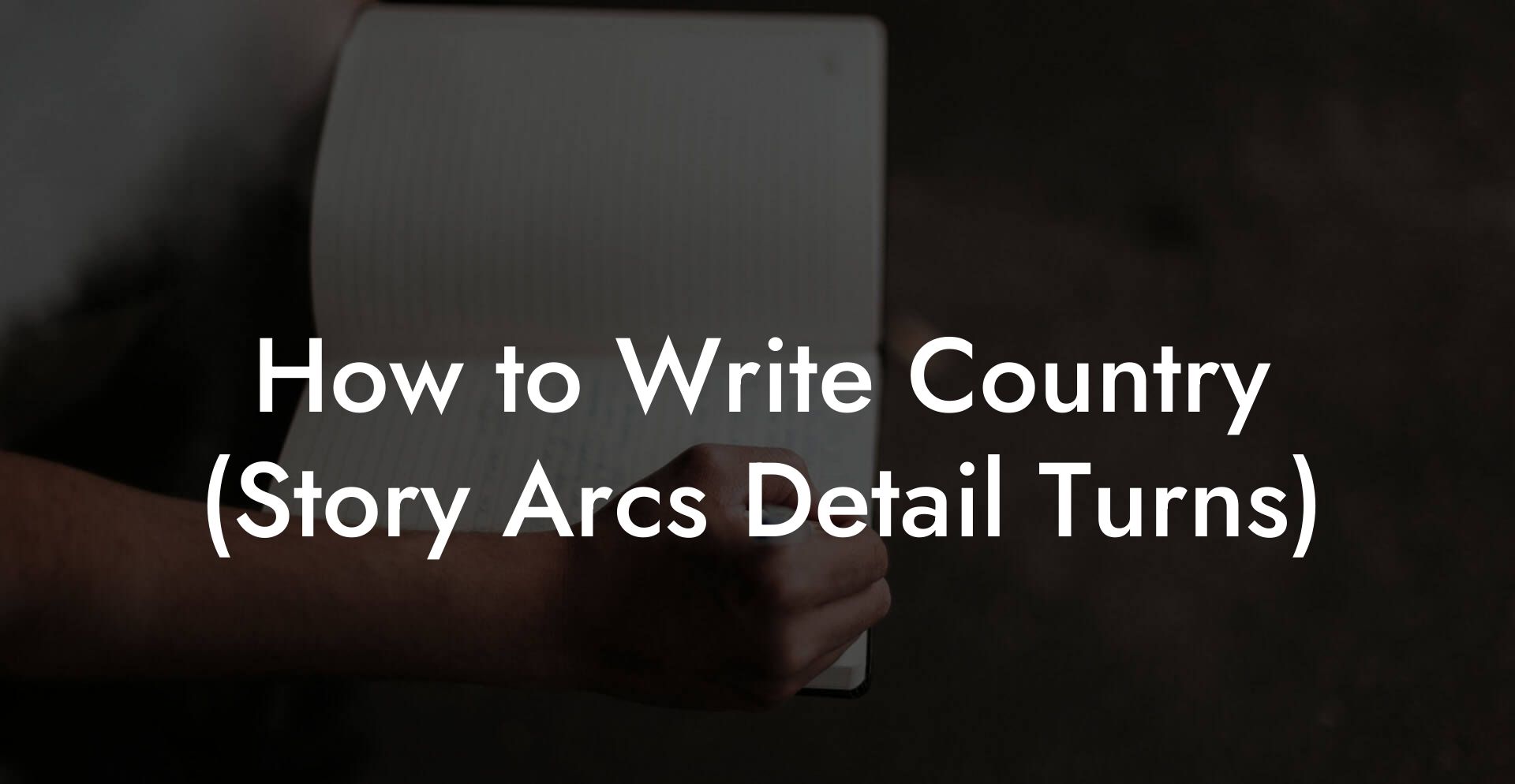
Country songs tell stories like your best friend on a porch light confession. They are built from characters, places, small objects that mean everything, and a turning moment that flips the heart. This guide gives you the blueprint to build country songs that feel cinematic and undeniable. We will cover story arcs, detail work, lyrical turns, structure templates, melody and prosody tips, and finishing workflows that get songs out of your head and into the studio.
Quick Interruption: Ever wondered how huge artists end up fighting for their own songs? The answer is in the fine print. Learn the lines that protect you. Own your masters. Keep royalties. Keep playing shows without moving back in with Mom. Find out more →
Quick Links to Useful Sections
- Why Story Matters in Country
- Core Elements of Country Story Songs
- Anatomy of a Country Story Arc
- Act One Setup
- Act Two Complication
- Act Three Turn and Payoff
- Voices and Point of View
- Handle With Care: Language and Dialect
- Specificity Over Clich e
- What Is a Turn or a Detail Turn
- Structure Templates You Can Steal
- Template A Classic Ballad
- Template B Snap Story
- Template C Scene and Reflection
- Titles and Hooks That Stick
- Rhyme, Rhythm, and Prosody
- Melody That Serves the Story
- Chord Progressions and Country Colors
- Production Notes for Country Writers
- Lyric Devices That Country Writers Use
- Ring Phrase
- List Escalation
- Callback
- Object Focus
- Editing Passes That Actually Matter
- Before and After Rewrites You Can Model
- Songwriting Exercises for Story Country
- Object Drill
- Time Crumb Drill
- Dialogue Drill
- Third Person Snapshot
- Topline and Co write Method
- Modern Country vs Traditional Country
- Finish The Song Workflow
- Common Mistakes and How to Fix Them
- Showcase: Full Song Sketch
- Pop Culture Examples and What They Teach
- Action Plan You Can Use Today
- Country Songwriting FAQ
Everything here is written for artists who want songs that land in the ears of both truck drivers and streaming playlist scouts. Expect blunt edits, a few jokes, and plenty of examples you can steal. We explain any term or acronym so you never have to nod like you understand and then later Google something at 2 a.m.
Why Story Matters in Country
Country music is a language of scenes. A good country song does not just state a feeling. It stages an event, places a camera in a small world, and pulls the rug out from under the listener with a turn. Think of country as cinematic short form. The song has to create a complete emotional arc within a few minutes. That means you need an inciting incident, a rising complication, a turning moment, and an emotional payoff or a beautiful unresolved ache.
Real life example. Imagine your friend texts you they are finally moving on. The text is one line, but the weight of their apartment, the mug with lipstick on it, the phone on vibrate, everything carries the scene. A country lyric grabs that one object and uses it as the story engine. Your listener does not need a novel. They need a living moment that feels true.
Core Elements of Country Story Songs
- Character A person with wants and history.
- Place A location or setting that anchors the story. This can be as small as a kitchen table.
- Object A prop that carries memory. The glove, the lighter, the faded photograph.
- Inciting incident The event that starts the story. A truck leaving, a ring box opened, a job offer from the city.
- Turn or reveal A detail that changes meaning. Often this is the twist that makes the lyric land.
- Resolution or emotional truth The feeling the listener leaves with. Not always happy. Often honest.
We will define a few of these terms as they appear. Inciting incident means the first event that pushes the narrative into motion. Turn means a lyric or melodic moment that changes the stakes. Resolution is the emotional conclusion. If acronyms pop up we will explain them in plain English so you can sound smart in conversations without lying.
Anatomy of a Country Story Arc
Most strong country songs borrow from classical narrative shapes. The simplest and most reliable is a three act arc adapted to a three or four section song. The three acts are setup, complication, and turn or resolution. Here is how that maps to typical song parts.
Act One Setup
Verse one is your establishing shot. Introduce the character and the setting. Keep it concrete. Show the object that will mean something later. Use small details that feel lived in. Example lines might describe a lawn chair, a dented cooler, a faded school ID, a coffee stain on a shirt. These details give your listener a place to stand.
Act Two Complication
Verse two introduces stakes. The person tries to change things and fails. Or they act and consequences appear. The pre chorus can live here as a pressure cooker. The chorus is where the emotional statement lands. The chorus does not have to retell the story. It should name the central truth. Often the chorus is a vow, a regret, or a defiant line that sums what the character wants or what they have lost.
Act Three Turn and Payoff
The bridge or final verse holds the turn. A detail reveals a different truth. The song ends with a moment that reframes earlier lines. The turn can be subtle. Sometimes it is a one word swap. Sometimes it is a whole narrative reveal. Great country songs use a turn to make the chorus sting with new meaning on the last repeat.
Example structure map
- Verse one sets scene
- Chorus states the emotional promise
- Verse two complicates the promise with action
- Bridge or verse three reveals the turn
- Final chorus lands with new weight
Voices and Point of View
Who tells the story matters as much as the story itself. Point of view is often abbreviated as POV. POV stands for point of view and it tells you who is speaking. First person is the I voice. This is intimate and confessional. Second person is you voice. This can be accusatory or tender. Third person describes someone else and allows distance or irony.
Country loves first person because it feels like a conversation at a bar. But third person can be a secret weapon. Third person allows you to be a narrator reporting on a scene. It can feel cinematic. Example. Third person gives you room to show character details that feel observational. First person can make a chorus feel like a vow or an admission.
Handle With Care: Language and Dialect
Country songwriting often uses colloquial speech. That is not a free pass to be lazy. Dialect needs to feel earned. Use contractions and everyday phrasing instead of showing off invented misspellings. If your character is from a place you have not lived in, lean on research and on small believable details rather than caricature.
Relatable scenario. If you want to write a song from the perspective of a ranch hand, you do not need to pepper the lyrics with eight cowboy phrases. Pick one or two authentic details and then write the rest in clear, modern syntax. The listener will fill the rest. Subtlety makes a song feel honest. Overdoing the accent makes it feel like a sketch.
Specificity Over Clich e
Country has a reputation for certain images. Trucks, whiskey, heartbreak. Those images are powerful when authentic. They become cliché when used without a unique angle. Replace general references with precise objects and actions. Instead of writing about being lonely at night say the late shift coffee reads ten degrees too cold. Instead of a truck write about a tailgate with a paint chip the size of a postage stamp.
Before and after example
Before I sat in my truck and thought about you.
After The tailgate had a paint chip like a missing tooth. I balanced my coffee on it and watched the highway swallow your taillights.
The after version creates a camera shot. The listener can see the chipped paint. The coffee becomes an emotional prop. That is the trick. Give them one sensory object and they do the rest of the imagining for you.
What Is a Turn or a Detail Turn
A turn is the moment that flips the meaning of what you thought the song was about. It is often one line that reframes the earlier narrative. In country songwriting we call this a detail turn. A detail turn uses a small object or a micro action to change everything. Think of it like a plot twist in a short film. It does not have to be big. It needs to be true.
Example of a detail turn
Verse one shows the character fixing a porch light every night. Chorus says they wait for her to come home. Verse two reveals she left twelve months ago in a car with a borrowed dog. Then the bridge reveals the porch light is now a motel neon that reads vacancy. The final chorus then sits on the word vacancy with a new meaning.
That one reveal, the motel neon, flips the image of waiting at home. It makes the song ache differently.
Structure Templates You Can Steal
Templates create speed. Use them as starting points then break them on purpose. Here are three templates tailored for story country songs.
Template A Classic Ballad
- Intro with a small motif
- Verse one setup with place and object
- Chorus emotional statement or vow
- Verse two complication with action
- Chorus repeat with slight lyric change
- Bridge with turn or reveal
- Final chorus with new meaning and maybe a single changed word
Template B Snap Story
- Verse one short snapshot
- Pre chorus builds the pressure
- Chorus delivers the hook and title
- Verse two continues action and ends on a twist line
- Chorus returns with added resonance
- Outro repeats a line as a tag
Template C Scene and Reflection
- Verse one shows a scene in detail
- Pre chorus moves to the emotional question
- Chorus answers with a memorable phrase
- Bridge is reflective and uses images from verse one but with the new perspective
- Final chorus short and stoic
Titles and Hooks That Stick
A title in country songwriting can be concrete or clever. Usually the best country titles are simple and hooky. The title should be a short phrase you can sing and that sounds like something someone might say. The title does not need to appear in every chorus but it should anchor the emotional idea.
Title types
- Literal title A straightforward object or image like Spare Key, Porch Light, or Gas Station Song.
- Emotional title A feeling turned into a phrase like Yesterday Less You, Still Standing, or Not Tonight.
- Phrase title Something conversational that would play as a line in a movie or a text like Call It Even or We Wore Boots Out.
Real life test. Say the title out loud like you are ordering a coffee. Does it sound believable? If it sounds forced it will probably sound forced on a chorus too. Keep it natural.
Rhyme, Rhythm, and Prosody
Prosody is the match between the natural stress of words and the beat of your melody. It is how comfortable lyrics feel in the mouth. Sing your lines out loud before you write the final version. If a strong word falls on an offbeat your ear will feel friction even if you cannot explain why. Fix prosody by rewriting the line or shifting the melody so that natural speech stress lands on stronger beats.
Rhyme decisions in country should support the story not distract. Use end rhyme for comfort. Use internal rhyme for momentum. Family rhymes are fine. Exact rhymes can feel old school if every line ends with one. Mix it up.
Example of prosody fix
Awkward The kitchen light is small and makes a shadow of your jawline.
Better The kitchen light makes a shadow of your jaw.
The second line moves the natural stress and cleans the phrase so the melody can carry it without tripping on the word jawline.
Melody That Serves the Story
Country melodies often favor singable shapes that feel close to speech. That means stepwise movement with an occasional leap for emphasis. Use a small leap on the chorus title to make it feel like arrival. Keep verses in a narrower range. The chorus should feel wider and more open.
- Jump into the title with a leap then settle back into stepwise motion.
- Keep the bridge as a quiet conversational lift or as a big open release depending on the song mood.
- Test the melody by singing it while reading the lyrics. If it feels like natural speech you are on the right track.
Chord Progressions and Country Colors
Country harmony is rarely about complexity. It is about support for lyric and melody. Classic progressions like I IV V or I V vi IV work well. We will use Nashville numbers when useful. The Nashville Number System is often shortened to NNS. NNS is a method of writing chord progressions using numbers instead of chord names so that a song can be transposed quickly. For example 1 4 5 in the key of G is G C D. If you are collaborating it is an elegant way to share progressions fast.
Color ideas to try
- Major folk Keep the verse simple on 1 and 4. Let the chorus add the relative minor for a wistful lift.
- Modal color Borrow a chord from the parallel minor for a tug of melancholy in the chorus.
- Punchy bridge Move to the minor vi for the bridge to create tension then return to the major chorus for relief.
Production Notes for Country Writers
You do not have to be a producer to write like one. Small production choices influence lyric decisions. If you imagine the song with a steel guitar or a pedal steel it can open space for vowel notes that sit on long sustains. If you hear an acoustic guitar and harmonica you might write snappier lines and leave room for instrumental answers between vocal phrases.
Simple production guide
- Intimacy Use sparse acoustic and a warm vocal. Leave space for the story to breathe.
- Anthem Use full band, stacked vocals, and a melodic hook in the lead instrument. This supports choruses meant for singalong.
- Modern crossover Add subtle programming and rhythmic elements but keep organic instruments in the foreground for authenticity.
Lyric Devices That Country Writers Use
Ring Phrase
Repeat a short phrase at the start and end of the chorus. This builds memory. Example ring phrase: Leave the porch light on. Start the chorus with it and end the final chorus with it again after the reveal.
List Escalation
Three items where the last item carries the emotional weight. Example list: He left his hat, left the milk out, left his name on every seat in town. The last item lands with emotional color.
Callback
Bring a line from verse one back in the bridge with one altered word. It makes the story feel circular and intentional.
Object Focus
Make one physical object the anchor of the story. Track how it changes meaning as the song moves. The object becomes the emotional device.
Editing Passes That Actually Matter
Songwriting is editing. One of the best passes you can run is the replacement of abstractions with specifics. Abstract words like lonely, broken, or fine are placeholders. Replace them with things you can see, hear, taste, or touch.
- Find every abstract word. Replace with a concrete detail.
- Find every time crumb. Add a time or place if missing. Time crumb means the line includes a specific time like midnight, 4 a.m., Wednesday night. Place crumb is a physical location like the diner, the county line, the gas station.
- Check for redundancies. If two lines say similar things remove the weaker one.
- Run prosody test. Speak the lyric and mark stressed syllables. Align those stresses with strong beats in your melody.
- Add a turn line. If you do not have a reveal the song will feel flat. Force a small detail to reframe the song.
Before and After Rewrites You Can Model
Theme Waiting for someone who will not come back.
Before I sit on the porch and think about you every night.
After The porch swing keeps a rhythm for my empty cup. I count the dents in your coffee mug and call them by your name.
Theme Small town pride with a secret regret.
Before I grew up here and I cannot leave.
After The courthouse clock still smells like dust. I have the diploma folded in a drawer labeled maybe someday. It thinks I will forget it. It is wrong.
The after lines use sensory detail and a small object to create the emotional pressure. That is the method. One image that acts like a key can unlock the rest of the song.
Songwriting Exercises for Story Country
Object Drill
Pick one object near you. Write four lines where the object changes its meaning in each line. Ten minutes. Example object: an old key.
Time Crumb Drill
Write a chorus that includes a specific time and a weekday. The more precise the time the more cinematic the image. Five minutes.
Dialogue Drill
Write a verse entirely as text messages between two people. Make the last line of the conversation the turn. Five minutes. This forces economy and modern phrasing for Gen Z listeners.
Third Person Snapshot
Write a 12 line story in third person that ends with a line that changes everything. Then convert three lines into a chorus phrase. Ten minutes.
Topline and Co write Method
Topline means the melody and lyrics sung over a track. Some writers start with a full demo. Some start with a guitar or piano. Here is a practical topline method that works in co writes and alone.
- Make a two chord loop. Keep it simple.
- Do a vowel pass. Sing nonsense syllables on the loop for two minutes and mark moments that feel repeatable.
- Map your story in one sentence. This is your core promise. Example sentence I will wait at the county line until you learn to say sorry.
- Find the most singable moment from the vowel pass and place your title there.
- Write verses around actions and objects that support the title.
- Check prosody and adjust.
Co writing tip. Bring one clear role. One person can bring melody instincts. Another can bring a specific detail list. If everyone tries to do everything the song commonly becomes polite and bland. Assign one person to defend the object and the turn. That person says no to distractions and keeps the story honest.
Modern Country vs Traditional Country
Modern country often borrows elements from pop and hip hop like production techniques and rhythmic vocal delivery. Traditional country leans into acoustic instruments and classic phrasing. Neither is better. The choice should serve the song. If your story is intimate and sad maybe sparse acoustic will carry it. If it is defiant and radio friendly maybe a punchier production will help the chorus land at a stadium.
Relatable scenario. If your friends are into playlists and TikTok, think about a chorus with a short hook that can be clipped into a 15 second video. If your audience is radio listeners who like to bob their head while they drive a truck then think about a chorus that opens with a big vowel and is easy to sing at speed. Both approaches still require honest story work. Production does not replace story.
Finish The Song Workflow
- Lock the core promise. Write one sentence that defines the song. Put it above your lyric page and do not lose it.
- Spy on clichés. Replace at least three cliché lines with concrete details.
- Find the turn. If there is no reveal build one. It can be as small as changing the object description or as big as revealing a new relationship truth.
- Check prosody. Speak the lyric at normal speed and align stresses with beats or long notes.
- Record a rough topline. Even a phone demo helps clarify melody and rhythm.
- Get feedback. Play for one or two listeners and ask what image they remember. If they remember the image you intended you are winning.
- Polish one more time. Change only the lines that increase clarity or emotional power. Stop tinkering after that.
Common Mistakes and How to Fix Them
- Too many ideas Fix by choosing one emotional promise and cutting lines that do not serve it.
- Vague lyric Replace abstractions with sensory details and time crumbs.
- No reveal Add a turn in the bridge or the last verse. The reveal can be one surprising object or one line that reframes the chorus.
- Stiff prosody Speak the lines out loud. If any word trips your tongue rewrite it.
- Overwritten image If a line tries to describe the whole life of a character compress it into a single concrete action instead.
Showcase: Full Song Sketch
Core promise You kept waiting for someone who already left.
Verse one The mailbox still has the bill with your name. My raincoat hangs on the peg where your jacket used to live. The house plant leans toward the window like it remembers your shoulders.
Pre chorus I keep the porch light on for a shape that does not come back.
Chorus I leave the porch light on, I leave the porch light on. It keeps the night from realizing you are gone. I leave the porch light on, I leave the porch light on. It is less of a beacon and more of a stubborn song.
Verse two The truck you promised to fix idles in the driveway with a flat that never mended. Your playlist still plays that MF doom song at three in the morning. I let it finish once as a mercy then I throw it into the glove box like an excuse.
Bridge with turn Tonight a motel neon spells vacancy two miles down the road. I drive past like I already knew where you were going. The porch light blinks like a heartbeat that forgot its rhythm.
Final chorus I leave the porch light on, I leave the porch light on. It keeps me company when the truth learns to speak. I leave the porch light on, I leave the porch light on. It is less of a beacon and more of a vow I do not know how to keep.
This sketch uses a single object the porch light to carry emotional weight. The bridge reveals the motel neon which turns the act of waiting into the recognition of leaving. The final chorus lands with a quieter meaning because of that one detail turn.
Pop Culture Examples and What They Teach
Listen to classics and modern hits and ask these questions. What object repeats? When does a turn appear? Does the chorus change meaning after the bridge? Examples to study include a traditional heartbreak song and a newer story song that uses modern details like texting or a flight. Notice how modern listeners latch to technology details when they are used honestly and sparingly.
Action Plan You Can Use Today
- Write one sentence that states the emotional promise. Example I will leave the porch light on until you say sorry.
- Choose a single object that can carry the song. Example porch light, bent key, cracked mirror.
- Map your three acts on a page. One line per section. Keep it tight.
- Do the object drill for ten minutes and write four lines where the object changes meaning.
- Find a turn. If you cannot find one force a reveal in line nine. Make it true and specific.
- Record a rough demo and play it for one listener who is honest. Ask them what image they remember.
Country Songwriting FAQ
What is a detail turn in songwriting
A detail turn is a small reveal that changes the meaning of the story. It is often one line in a bridge or a later verse that recontextualizes earlier images. The turn does not have to be a shock. It must be true and specific.
How do I write a chorus that supports a story
Make the chorus a clear emotional statement that sums the song. Use simple language. Repeat the title for memory. Leave space for the verses to add the scene. The chorus should feel like an answer to the question the verses raise.
Do I need to write in first person for country songs
No. First person creates intimacy but third person can create cinematic space. Choose the POV that best serves the story. First person is good for confessional songs. Third person is good for storyteller songs.
How do I avoid country clichés
Swap in specific objects and unexpected details. If you find two songs with the same image it is a red flag. Use time crumbs and place crumbs. Keep the language conversational and avoid stock phrases unless you can give them a fresh twist.
What is prosody and why does it matter
Prosody is how words naturally stress in speech and how those stresses match up with the beats in your melody. Good prosody makes lyrics feel effortless to sing. Bad prosody makes good lines feel awkward. Speak your lines out loud to test prosody.
How long should a country song be
Most country songs land between two and four minutes. The goal is momentum not exact runtime. Deliver the first chorus early enough to hook the listener and use verse and bridge for story development.
What chord progressions work best in country
Simple progressions like 1 4 5 and 1 5 6 4 are effective. The Nashville Number System or NNS is helpful for transposing. Keep harmony small so the lyrics and melody can carry the identity.
Should I use modern production in a country song
Use production to serve the story. Modern elements can increase reach but do not hide weak writing behind beats. If the song is intimate keep production sparse. If the chorus is anthemic add layers and vocal stacks.
How do I write a great title
Keep it short and conversational. Pick a title that would feel natural in a text or a bar conversation. Test the title by saying it out loud and singing it. If it feels honest and singable keep it.
Can I write country about modern things
Yes. Country is a living genre. Texting, city skylines, and streaming playlists can appear in country songs if they serve the truth of the character. Use modern details sparingly to avoid dating the song unless the detail is part of the song identity.




